What is purple sprouting broccoli? Learn about its vibrant color, unique flavor, and nutritional benefits in this ultimate guide to purple broccoli!
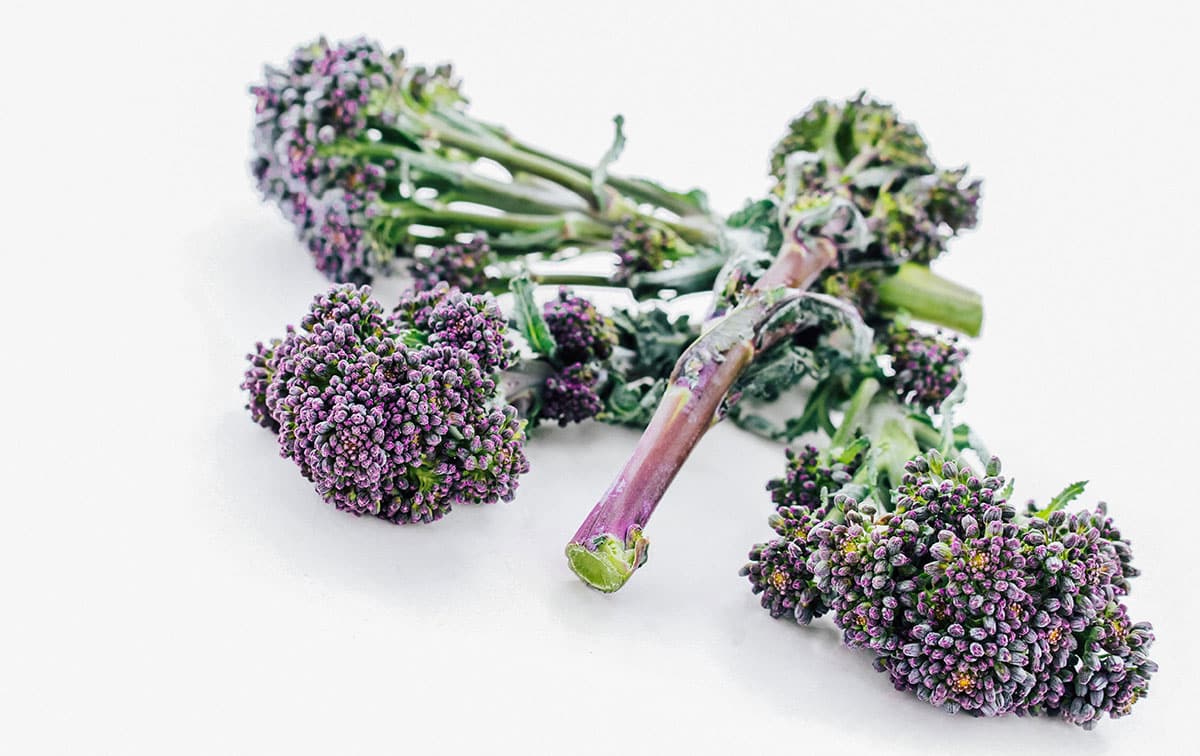
You have seen, on occasion, broccoli turning purple with just a bit of purple hue to the head. You may not, however, have seen the full purple broccoli which can be both aesthetic and extra healthy!
What is purple sprouting broccoli?
Purple sprouting broccoli is a variety of broccoli known for its vibrant purple-colored florets. Unlike regular broccoli, which typically has one large head, purple sprouting broccoli produces numerous small florets that grow along long, slender stems. This delicious vegetable has a slightly sweeter and more delicate flavor compared to traditional broccoli. It’s also packed with nutrients like vitamins A, C, and K, as well as fiber. Purple sprouting broccoli is a versatile ingredient that can be steamed, sautéed, roasted, or used in a variety of dishes to add a pop of color and flavor.
Where Is Purple Broccoli From?
Purple broccoli originated in the Eastern Mediterranean and Central Asian regions, but we aren’t really sure when. The first record of dedicated cultivation was in Italy in 1885, where it appeared in a seed catalog. It was taken up quickly by the English, and appeared in the United States shortly after in limited use.
A Dr. Alan Gray is often, incorrectly, credited with developing purple broccoli, but in fact he simply worked to improve its taste and hardiness to allow for profitable commercialization.
Where To Buy Purple Broccoli
You can find purple broccoli at some specialty markets, or order it online. Expect to pay more than you would for everyday green broccoli.
We expect purple broccoli’s cost to come down and availability to go up in future years as breeders are working on a variety of purple sprouting broccoli that does not require overwintering.
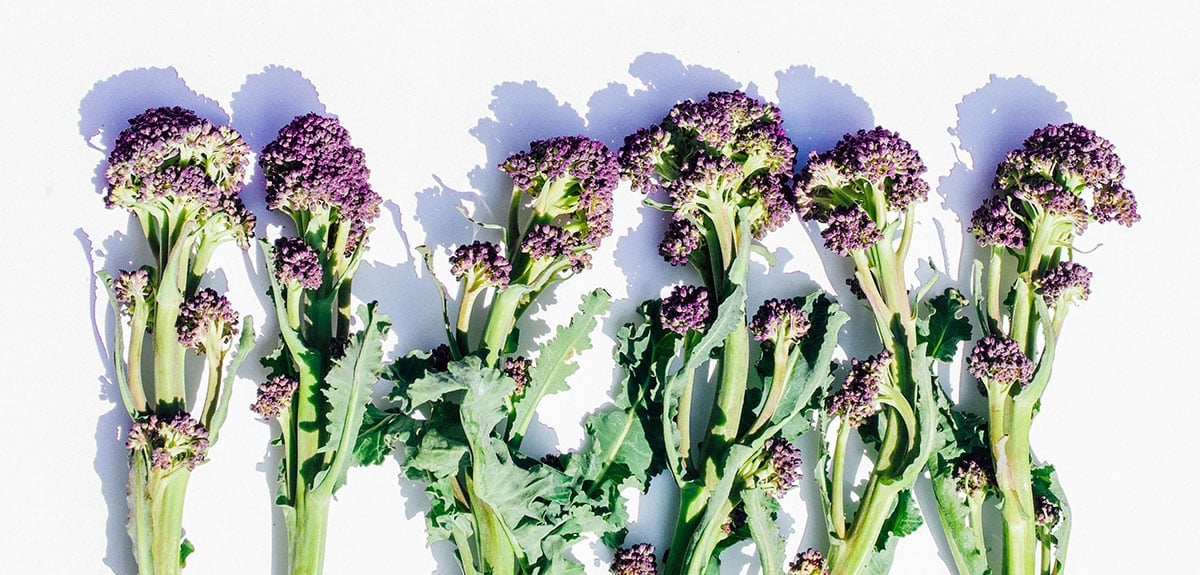
Taste and Uses
Purple Broccoli is a bit sweeter than green broccoli, but the real benefit it brings to your cuisine is its unique color. Be warned that the color tends to dim in cooking, so we recommend using it mostly in raw applications. It would go great in this Broccoli Salad mixed half and half with normal green broccoli to give it a sweeter flavor and nice color variation.
High temperature cooking like baking, boiling, or sautéing will cause the anthocyanins in purple broccoli to break down. You don’t want that, as you will lose much of the color and the nutritional umph. So, consider putting some on the grill in a recipe like this Grilled Broccoli Salad.
Purple Broccoli Benefits
Purple broccoli gets its color from the presence of anthocyanin. This is the substance in all purple and blue fruits and vegetables that provides the pleasant color. More importantly anthocyanins are an antioxidant believed to provide significant health benefits. According to the National Institute for Health these include “antidiabetic, anticancer, anti-inflammatory, antimicrobial, and anti-obesity effects, as well as prevention of cardiovascular diseases.” That is a pretty impressive list and a strong argument for adding more purple and blue to your diet.
Purple Broccoli Nutrition Info
According to the USDA 100 grams of broccoli (3.5 ounces or about a cup) contains
- 34 Calories
- 6.6g of Carbohydrates
- 2.6g of Fiber
- 2.8g of Protein
- 105% of the RDA of Vitamin C
- 4% of the RDA of Iron (women’s RDA)
- 16% of the RDA of Folate
- 5% of the RDA of Calcium
Besides anthocyanins purple broccoli contains other phytonutrients and flavonoids like lutein and zeaxanthin, which are also beneficial antioxidants.
Is Broccoli Keto Friendly?
Yes broccoli is keto-friendly. According to the USDA a cup of broccoli contains 4g of net carbs (total carbs minus dietary fiber). This amount is easily worked into a keto or other low carb diet, and provides a wealth of nutritional content difficult to get in a high fat diet.
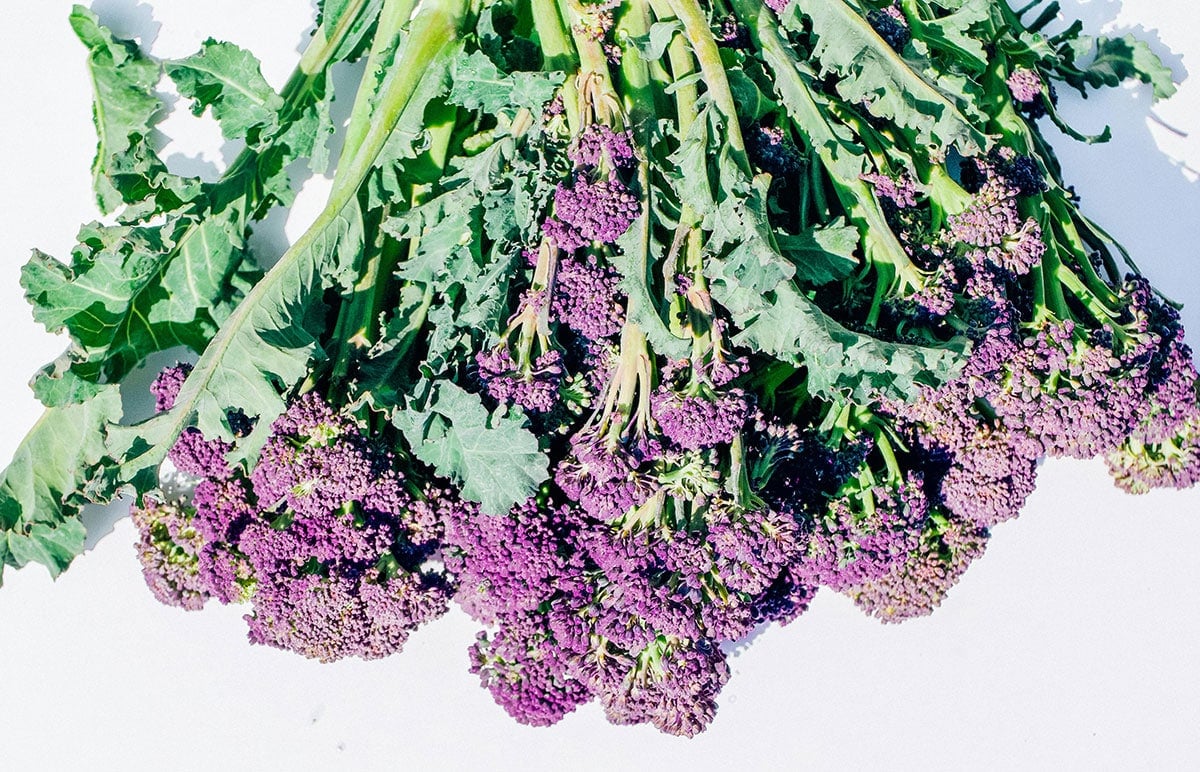
Purple Broccolini
There is also a purple variety of broccolini. It is a hybrid of broccoli and Chinese kale. It contains the same beneficial antioxidants, and is unfortunately also prone to lose its color under high temperature cooking. Purple broccolini has a mild, slightly peppery and sweet taste.
Frequently Asked Questions
Nope, Asian broccoli, or Chinese broccoli looks more like collards and has a decidedly more pungent flavor.
Yes, you can easily find them online, but our observation is that most are just broccoli recipes using purple broccoli regardless of how the cooking may affect the color. If you want to maintain the purple hue, your best bet to to use purple broccoli raw in salads.
Want to know more about all types of Broccoli? Check out our Everything Broccoli Guide and our 7 Broccoli Recipes that will make you want to eat your Greens! And, as always, happy cooking.
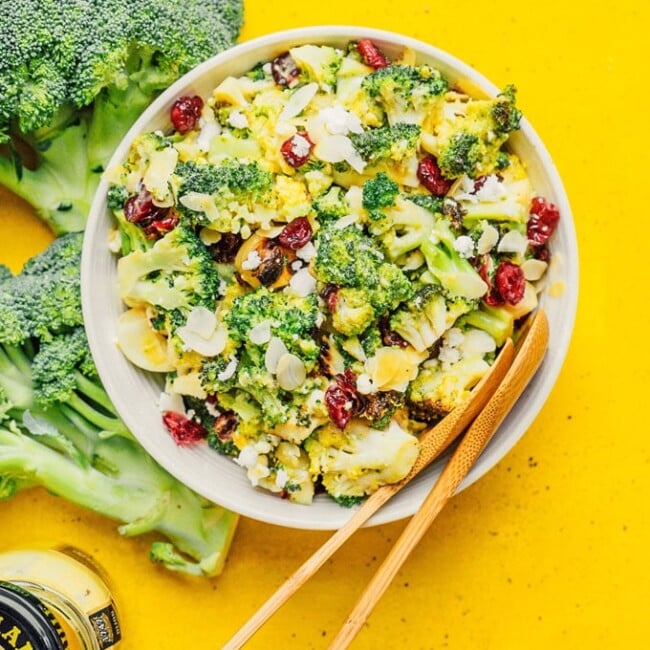
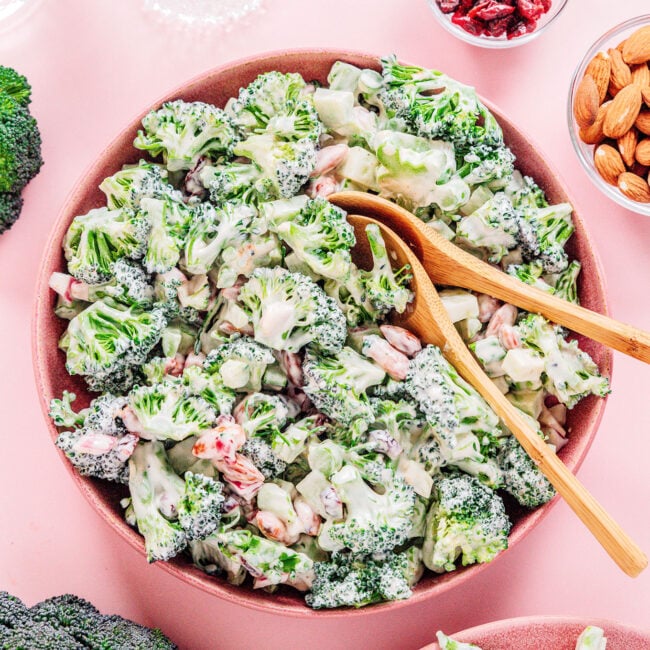
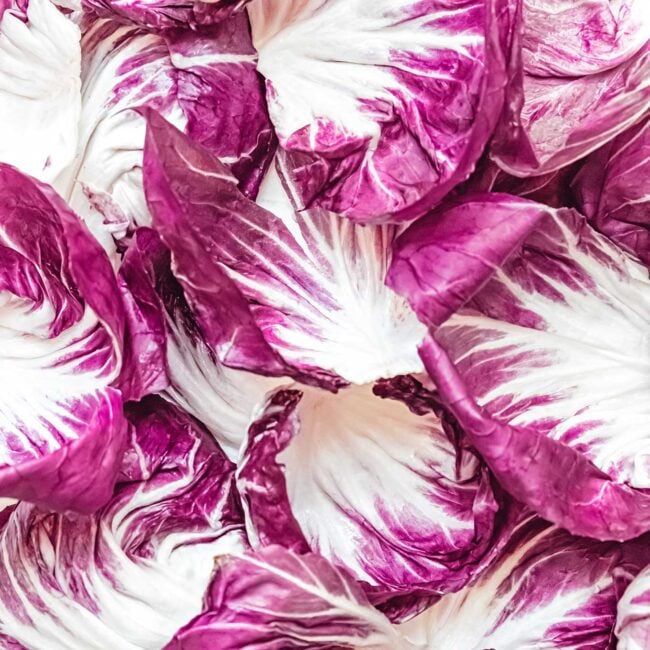
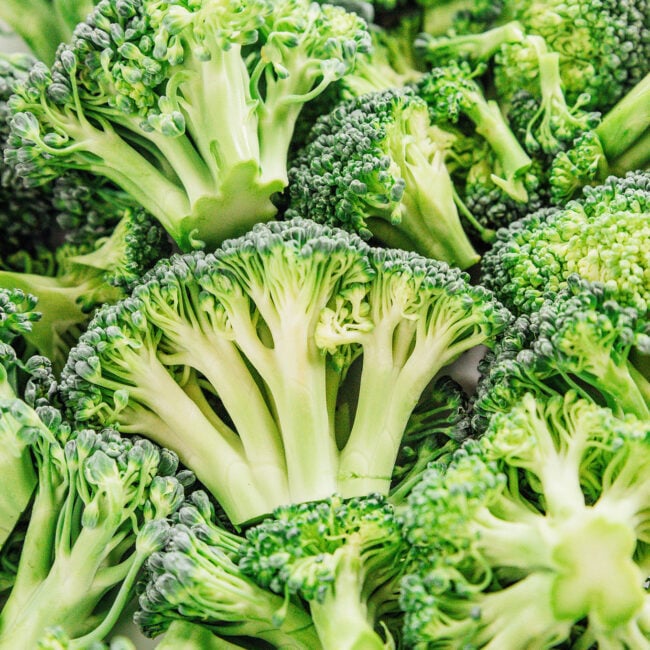
Leave a Comment